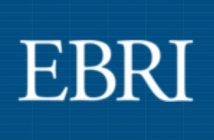Invoice financing can be a valuable tool for businesses looking to improve cash flow, but understanding the costs involved is essential to making informed decisions. From interest rates to service fees, the expenses can vary based on the provider and financing terms. We’ll break down the key costs and fees associated with invoice financing, helping you determine if it’s the right solution for your business.
Key Factors That Influence the Cost of Invoice Financing
The cost of invoice financing depends on several factors that impact how much you pay for this funding option. One of the biggest factors is your business’s creditworthiness. Lenders assess your financial health, including your credit score and payment history, to determine your risk level. The stronger your financial standing, the better the rates you may receive.
Another key factor is the size and number of invoices you finance. Larger invoices or frequent financing may lead to lower fees, as lenders often offer better terms for higher volumes. The repayment period also affects costs—longer repayment times usually mean higher fees, while quicker repayment can reduce costs.
Lastly, the lender you choose plays a big role. Different providers offer different fee structures, so it’s important to compare options. Understanding these factors helps you make informed decisions and ensures that invoice financing supports your cash flow without unnecessary expenses.
Understanding Discount Rates and Their Impact on Your Finances
The discount rate is a key cost in invoice financing that directly affects how much money you receive. This rate is the percentage a lender deducts from your invoice value as their fee.
Typically, discount rates range from 1% to 5%, but they can vary based on factors like your industry, the creditworthiness of your customers, and the lender’s terms.
A lower discount rate means you keep more of your money, while a higher rate reduces the amount you receive. If your business relies heavily on invoice financing, these costs can add up quickly.
Shorter repayment periods usually lead to lower discount rates, while longer terms may increase the total cost. To minimize expenses, compare lenders and negotiate better terms when possible.
Understanding how discount rates work helps you make smarter financial decisions, ensuring that invoice financing benefits your business without unnecessary losses.
Common Service Fees in Invoice Financing Agreements
Service fees vary by lender and can impact your total cost. One common charge is the origination fee, which covers the setup and processing of your financing agreement. Some lenders charge a flat fee, while others base it on a percentage of your invoice value.
Another fee to watch for is the maintenance fee, which is charged for ongoing account management. If you regularly use invoice financing, this cost can add up over time. Some providers charge a processing fee each time they advance funds, which reduces the amount you receive.
Late payment fees are also common. If your customer takes longer than expected to pay, the lender may apply extra charges. Understanding these fees helps you avoid surprises and ensures that invoice financing remains a cost-effective solution for your business.
How Advance Rates Affect the Amount You Receive
Advance rates determine how much money you receive upfront when using invoice financing. Most lenders offer advance rates between 70% and 95% of your invoice value. The remaining percentage is held back until your customer pays the invoice, minus any fees.
Higher advance rates give you more immediate cash, which can help with working capital. However, lenders may charge higher fees for higher advance rates, increasing your overall cost. If your business has strong financials and works with reliable customers, you may qualify for a better advance rate.
Lower advance rates mean you receive less money upfront, but they often come with lower costs. It’s important to balance how much cash you need now with the total cost of financing. Understanding how advance rates work helps you choose the best invoice financing option for your business while keeping costs under control.
Late Payment Fees and Additional Charges to Watch Out For
Late payments can increase the cost of invoice financing, so it’s important to understand the fees involved. If your customer takes longer than expected to pay an invoice, the lender may charge late payment fees. These fees vary but can add up quickly, increasing your overall financing costs.
In addition to late fees, some lenders apply penalty interest rates when payments are overdue. This means you could pay a higher interest rate on the outstanding balance. Some agreements also include administrative fees for managing overdue invoices, adding another expense.
Another charge to watch for is the renewal fee, which applies if you extend your financing terms. If you frequently use invoice financing, these extra costs can affect your cash flow. Always review your agreement carefully and ask about potential additional charges.
Hidden Costs in Invoice Financing: What to Look Out For
Hidden fees can add up and affect your bottom line. One common hidden cost is the minimum usage fee, which some lenders charge if you don’t meet a required financing volume. Even if you don’t need to finance many invoices, you might still have to pay.
Another hidden expense is the early termination fee. If you decide to stop using invoice financing before your contract ends, some lenders may charge a penalty. Additionally, some agreements include credit check fees, where you pay for the lender to review your customers’ payment history.
Other charges, like bank transfer fees or fund disbursement fees, can reduce the amount of cash you actually receive. Before signing an agreement, carefully review the terms and ask about any potential extra costs. Knowing these hidden fees helps you avoid surprises and ensures you get the best deal on invoice financing.
Making an Informed Decision: Is Invoice Financing Worth the Cost?
Invoice financing can be a valuable tool for improving cash flow, but it’s important to weigh the costs before making a decision. Fees like discount rates, service charges, and late payment penalties can add up, affecting your bottom line. Understanding these costs helps you determine whether invoice financing is the right choice for your business.
If you need quick access to cash and work with reliable customers, this financing option can be a smart solution. However, if fees are too high or hidden costs reduce your profits, it may not be the best fit. Comparing lenders, negotiating terms, and reviewing agreements carefully can help you get the best deal.
The key is to balance your cash flow needs with the overall cost of financing. When used wisely, invoice financing can support your business growth without unnecessary financial strain. By staying informed, you can make the best decision for your company’s long-term success.




